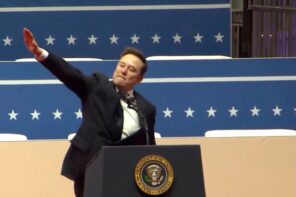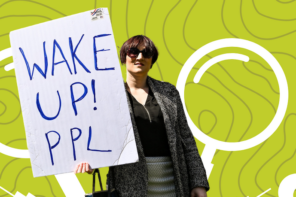In the twentieth century the word “cult” (originally meaning “worship”) became a pejorative word that people apply to a group or movement that they do not like and perhaps fear. The word “cult” implies a stereotype that involves what sociologist James T. Richardson has termed the “myth of the omnipotent leader” and a corresponding “myth of the passive, brainwashed follower.” These are just that: myths. They’re inaccurate assumptions about groups and movements with unconventional beliefs: no leader can become a dictator without complicit lieutenants who prop up his (or her) authority; the “brainwashing thesis” has been judged to be unscientific by the American Psychological Association and American judges and has been debunked by social scientists; in fact, people frequently change their minds and leave a group when they lose faith in its ideology.
In 2013 I wrote an essay titled “The Problem Is Totalism, Not Cults,” which argues that instead of using the pejorative word “cult,” which prevents unbiased research and dehumanizes believers, the term “totalism” better conveys what people were actually worried about: groups whose members live in isolated communities, where people are controlled and not permitted to leave when they choose. Such totalistic institutions range from some unconventional religious or political groups to prisons, concentration camps, and authoritarian governments of nations. Americans generally agree that they’re abusive.
Currently it’s fashionable to use the word “cult” to describe all sorts of groups and movements that people don’t like. It’s said that people who support former President Donald Trump constitute a “cult”; the diffuse QAnon movement is called a “cult”; and the January 6, 2021 insurrection against the United States Congress meeting in the Capitol has been alleged to be a “cult.” However, these are diffuse movements, not insulated, totalistic communities. “Cult” used in this manner is constructed to refer to the worst characteristics that people can imagine, which is what Yale historian Joanne Freeman did in a June 22, 2021 podcast with Boston College historian Heather Cox Richardson (no relation to James T. Richardson) when Freeman stated that members of a “cult” believe their side is righteous and that anyone opposed to them is evil and “must be defeated, executed.”
A statement like this says more about what Freeman imagines a “cult” to be than it does about the research of scholars who have studied alternative and emergent religious movements, including millennial movements. Starting by imposing one’s own constructed definition of “cult” on movements and groups inhibits careful investigation and analysis, as indicated by Freeman and Heather Cox Richardson comparing the QAnon movement to three different historical episodes in entirely different communal contexts: the Salem Witch Trials in 1692-1693, the Oneida Perfectionist community, and Jonestown.
As a scholar of the varieties of millennialism, I suggest that analysis of the QAnon movement and its relation to the January 6 insurrection is better understood as being a continuation of a Euro-American Nativist Millennial Movement, which has existed since the twentieth century and whose believers have been anticipating a revolution against the federal government for decades. Participants’ aim is to set up a collective salvation on earth for white people who regard themselves as the true “natives” of the land that is now the United States.
In the 1990s, participants in this white supremacist movement that had no name, which I have termed the Euro-American Nativist Millennial Movement, were waiting and preparing to carry out a “Second American Revolution.” When Timothy McVeigh carried out the Oklahoma City Bombing on April 19, 1995, he was hoping to spark the Second American Revolution. Instead, people were shocked at the loss of 168 innocent lives in the bombing. As a result, the militias that had formed, especially after the aggressive handling of the Branch Davidian community by ATF and FBI agents in 1993, became quiet until Barack Obama was elected president in 2008.
Over the past few years, as demands for the removal of Civil War monuments from public spaces have increased, people in the Euro-American Nativist Millennial Movement began to speak more openly about their preparations for a “Second Civil War.” The fervent members of this diffuse movement containing many different small groups and associations to which the term “White Nationalism” is now applied, responded to President Trump’s call to attack Congress on January 6, with the intention of forcing Vice President Mike Pence to declare that Trump had won the 2020 presidential election, which he had definitively lost. This assault on Congress was simply an initial blow in the expected Second Civil War, in which other enthusiastic Trump supporters were caught up. According to the FBI, it’s possible that other extremists in this QAnon/White Nationalist movement will carry out violence in the future to further their aim of a Civil War against the United States government and people who support it.
“Millennialism” (or “millenarianism”) is a term used by scholars to refer to movements in which people believe there will be “an imminent transition to a collective salvation, in which the faithful will experience well-being and the unpleasant limitations of the human condition will be eliminated.” The collective salvation may be considered to take place on earth or in a heavenly realm. “The collective salvation will be accomplished either by a divine or superhuman agent alone, or with the assistance of humans working according to the divine or superhuman will and plan.” Millennial movements may or may not have “prophets,” persons believed to be speaking a message from God or some other higher being. Millennial movements may or may not have a “messiah,” someone who’s believed by followers to be empowered by an unseen source of authority to create the collective salvation for the “elect.”
A range of behaviors is associated with millennial belief. People may wait for divine intervention; an example is the saying in the QAnon movement, “Trust the plan.” People may engage in social service, or perhaps engage in politics by voting or running for elected office, to work to create the desired collective salvation; millennial political activism is presently seen in the Trumpist version of the Republican Party. Some people may carry out revolution, or, if lacking a critical mass of participants, take terrorist actions in their attempts to create their desired collective salvation. On January 6, 2021, it probably seemed to a number of participants and supporters in the Euro-American Nativist Millennial Movement that they had finally achieved the critical mass of adherents to overthrow Congress.
There are many varieties of millennialism. As I wrote in The Oxford Handbook of Millennialism:
“A nativist millennial movement consists of people who feel under attack by a foreign colonizing government that is destroying their traditional way of life and is removing them from their land. Nativists long for a return to an idealized past golden age. Many nativists have identified themselves with the oppressions and deliverance of the Israelites as described in the Christian Old Testament.”
A range of behaviors may be found among nativist millennialists. Some resort to forms of prayer to request divine intervention. Some retreat to isolated communities to try to preserve and recreate their traditional way of life. Some are revolutionary and try to overthrow their oppressors. Scholars have reported on many nativist millennial movements among populations whose way of life has been disrupted by colonialists. Such movements include the Pai Marire movement among the Maori in New Zealand in the 1850s and 1860s, and the “Ghost Dance” movement among Native Americans in the Western United States in the late nineteenth century.
In the 1980s and 1990s in the United States, white people, especially farming families and people living in rural small towns, felt that their way of life and ownership of land and property were threatened by their inability to keep their farms and agriculture-related businesses due to government lending practices; their inability to repay loans and pay their taxes; and resulting seizures of their property. This provided impetus to the Euro-American Nativist Millennial Movement, many of whose participants believed the federal government was controlled by ZOG (Zionist Occupation Government) intent on exterminating white Americans and their way of life, thereby expressing their anti-semitism based on the dangerous and debunked conspiracy theory.
The Euro-American Nativist Millennial Movement has partial roots in a racist and anti-semitic form of Christianity called Christian Identity, which developed out of an earlier British Israelism movement from England. White people who believe in Christian Identity believe they are the true “Israelites.” They believe that people of color are animals and that Jews are children of Satan. Since the 1990s, participants in the Euro-American Nativist Millennial Movement have called themselves “Patriots” or “Christian Patriots.” They may be Identity Christians, Neo-Nazis, or adhere to racist forms of Paganism; they may even be secular but still expect to participate in a revolution that will destroy the federal government and create a collective salvation for white Americans.
People who call themselves “Sovereign Citizens” or “Freemen” believe they have deciphered the secrets of the American Constitution and “Common Law,” so they can benefit themselves when they state the “magic” words in documents they file in lawsuits and when they appear in court. Today, younger generations participate in the Euro-American Nativist Millennial Movement or White Nationalism in America, in groups such as the Oath Keepers or Proud Boys, while adherents to the older Christian Identity, Neo-Nazi, racist Pagan, and Sovereign Citizen groups and movements are still around. All of these make up the Euro-American Nativist Millennial Movement, and what they have in common is their racism, frequent anti-semitism, and belief in white supremacy.
The Euro-American Nativist Millennial Movement lacked a messiah figure until Donald Trump ran for president of the United States in 2016. Trump benefited from a convergence of two movements that regarded him as a messiah to create their respective ideas of a collective salvation. Self-described “apostles” and “prophets” in the Pentecostal movement called the New Apostolic Reformation described Trump as being anointed by God as a messiah modeled on Cyrus the Great of Persia mentioned in the book of Isaiah in chapter 45.
People in the New Apostolic Reformation and many fellow evangelical Christians have regarded President Trump as being God’s instrument to make the United States into a Christian government. Consisting of people of various ethnicities, the movement is not necessarily white supremacist. More directly related to the Euro-American Nativist Millennial Movement is QAnon, designed to be an addictive Alternative Reality Game (ARG). It’s been attractive to white people who are secular as well as many evangelical Christians.
“Q,” alleging to be a person with a high-level security clearance in the government, is the unseen source of authority that believers have viewed as empowering President Trump to destroy the “Deep State” from within, and eliminate Democrats who are described as a Satan-worshipping cabal of pedophiles who kill children to obtain their life essence. The individual who was posting “Q drops” online hasn’t posted since Trump lost the election to Joe Biden, nevertheless the QAnon conspiracy outlook remains influential.
Subsequent to Trump’s loss in the 2020 presidential election, members of the millennial movement(s) that view him as their savior have reacted in ways that believers in other failed prophecies have reacted. Some have given up their faith in Trump. Trump has rationalized the readily apparent loss of the election by promoting the view that he really did win but the election was stolen. Some have set later dates for Trump to become president. Sovereign Citizens, for example, provided March 4, 2021, the date originally stipulated by the Constitution for a presidential inauguration, as when he would be sworn in as president for a second term.
Lately, Trump and some supporters have begun to claim that he will be “reinstated” as president in August 2021, after there have been recounts in some states where, they believe, widespread voter fraud has taken place. (It shouldn’t be necessary, but sadly it is, to note here that there is no meaningful evidence of widespread voter fraud or that any recount would affect the result of the election.) This repeated setting of dates is reminiscent of the Millerite movement that expected the Second Coming of Christ in 1843-1844. Eventually the Millerite faithful had to concede a “Great Disappointment” on October 22, 1844, but believers channeled their reinterpreted apocalyptic expectations into creating subsequent Adventist movements and institutions, including the Seventh-day Adventist Church.
Key to discussions of some new religions, including some millennial movements, is the role of the “charismatic leader.” When scholars of religions use the term “charisma” or “charismatic leader” they aren’t referring to an individual viewed as charming by followers. Based on my comparative study of religions and building on the relatively vague definition of “charisma” by sociologist Max Weber, I define “charisma” as when followers believe that the leader (or sacred book, or sacred place, or sacred object) has access to an unseen source of authority. Therefore followers attribute charisma to leaders whom they regard as being prophets or messiahs. The leader’s charisma is socially constructed, and followers can withdraw their faith at any time. Trump was seen by participants in the New Apostolic Reformation as being anointed by God to carry out a task. Followers of the QAnon conspiracy theory similarly have seen Trump as the instrument of the unseen “Q” to create their idea of a collective salvation.
Some charismatic leaders use the charisma attributed to them responsibly; they try to benefit their followers and others, and they frequently attempt to downplay or give away the charismatic authority granted to them by followers. However, sociologist of religion Lorne L. Dawson has pointed out that a charismatic leader may “mismanage” his or her charisma due to her or his own psychopathologies, and thereby cause harm. Frequently this involves clinging to the role of the charismatic leader, no matter whether the lives of followers and others are endangered.
Since losing the 2020 election, Donald Trump has consistently demonstrated that his narcissism, and likely his fear of prosecution, are prompting him to mismanage his charisma by clinging to the role of U.S. president, to the detriment of American democracy, individuals, and families. Additionally, his assertion that he didn’t lose the election is being supported and disseminated by powerful media representatives on Fox News and One American News Network (OANN), along with a not insignificant number of elected members of Congress. A great deal of the concern on the part of white people is over their potential loss of status in America. This concern is being expressed in current Trumpist Republican efforts to curb access to voting by people of color and the social panic being fomented about “Critical Race Theory,” which has been turned into a pejorative term by people who either don’t understand what it refers to, or who are deliberately distorting it for political gain.
In contemporary society, the word “cult” comes with a readymade explanation that is illogically and pejoratively applied to groups and movements with differing characteristics. People are using the term “cult” to stigmatize groups and movements that they simply do not like. On June 23, 2021, General Mark Milley, Chairman of the Joint Chiefs of Staff, said in a congressional hearing that he wants to understand “white rage,” what caused “thousands of people to assault” the Capitol and “try to overturn the Constitution of the United States of America.” This important question deserves analysis from a variety of scholarly disciplines and areas of research, not a simplistic answer by applying a word that conveys an inaccurate stereotype. The study of the varieties of millennialism in the past—varieties that continue to animate wide segments of society today—can help General Milley and others who are seeking to understand the motivations of the coalition of citizens who attacked the United States Congress and the police officers defending it on January 6, 2021.





